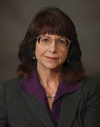Features Articles

As governments realize the importance of investing in domestic manufacturing, opportunities are coming for EMS firms and PCB fabricators.
It takes time to gain perspective, especially perspective on the industry you are immersed in. In my case, it’s been 30 years since I entered the printed circuit board market. During the first six or seven years, it was heady, upbeat times in North America. Growth was a bounty supporting hundreds of domestic fabricators. Materials, supplies and capital equipment were made “locally” in North America. Then, around the new millennium, everything changed.
Suddenly, work headed to Asia, and fabricators contracted at an unprecedented scale to fewer than 200 within a few short years. The collateral damage was a collapse of materials, supplies and capital equipment companies that supported the industry. Even worse was the exodus of skilled talent who sought careers in more promising industries and never looked back. The relatively few companies that survived did so by hunkering down, focusing on a niche, and investing in only the equipment they needed to support their business base, in some cases taking draconian steps that worked short term but eventually led to their demise. Over the first decade-plus of the new millennium, it was depressing to be a North American circuit board fabricator.
However, times change, and with that change, opportunities emerge – finally!
After decades of ignoring reality – and for a variety of reasons and events, many of which have nothing to do with printed circuit boards, or even electronics – government and industry leaders are “shocked” to learn so much of North America’s manufacturers are no longer globally competitive and how much more capability and capacity is required for economic and military security. Now that they understand the need to invest in manufacturing, more specifically in electronics manufacturing – everything from chips to bare circuit boards and substrates – opportunities for the North American PCB industry finally may be knocking.
Do we open the door and take full advantage, or ignore it and squander our chance?
To take advantage of the current momentum to expand and enhance North American capabilities and manufacturing capacity may require a radical rethinking, or at least retraining, in how we as an industry operate. The entire risk/reward equation in particular needs to be revisited. After nearly 20 years of operating in a hunkered-down mode to mitigate risk and maximize reward, many in our industry may need to be retrained to break old habits and embrace a paradigm shift the opportunities of the future offer.
The first step toward taking advantage of new opportunities may be a brutally honest self-evaluation of what your company does, for whom, and with what resources. Most important is understanding what government or “C-suite” investment in electronics technology may look like and how that will impact your customers. As an example, if chip plants are built in North America, what other electronics manufacturing may now become more cost-effective if done closer to those plants vs. overseas. And, what printed circuit board technology will that increased demand for capacity impact?
With investment in more advanced technology, will new materials and the processing knowhow and equipment be outside current capabilities or comfort zones? Discussions with material suppliers should include a dialogue on what to be aware of; begin experimenting to be better prepared.
If the gap in North American electronics capability points to a specific type of printed circuit board technology that will be in especially high demand, that may be the place to consider increasing capital investment to either add capacity, enhance capability or broaden product offerings to include the growth opportunity. This review should include an estimated capital equipment budget and supporting cash flow, as well as a reality check with current customers to understand if their products and purchasing demands may also be impacted and shifting.
When demand increases, what type of employees will your company need to hire? This leads to workforce development opportunities that currently exist, and in the next few years will expand with an increase in qualified people seeking jobs in electronics. More important, with the emphasis on investing in new capabilities, what talent gap might you have that would prevent being able to produce a new technology? Getting involved now may be the best way to ensure having qualified talent when needed.
To take advantage of any opportunity that a reinterest in North American electronics manufacturing may present, it is essential to stay informed and get your team ready. Nothing will happen overnight, but it will happen more quickly than anyone who has become comfortable in the current industry paradigm imagines. We all need to be aware significant new opportunities are finally on the horizon.
After so long operating in a contracting industry segment, we in North America cannot afford to let the coming opportunities be squandered. Opportunity for growth is knocking for us all.
is president and CEO of IMI Inc.; pbigelow@imipcb.com. His column appears monthly.

How using a thinner stencil corrected transfer efficiency.
SMT specialists are intimately familiar with the guiding rule of stencil printing: the area ratio. The correlation between stencil aperture dimensions and the predictability of solder paste transfer efficiency is well understood, and IPC has standardized design guidelines outlining ideal conditions. The accepted area ratio for maximum transfer efficiency is approximately 0.60, which is a function of the aperture open area and aperture wall area (stencil thickness). When the area ratio falls below the recommendation, challenges arise.
Reaffirmation of the relevance of the area ratio rule occurred recently when our company was asked to analyze a customer assembly where bridging was observed. The printing dimensions of the PCB’s bridging area were tight. The 01005 apertures measured 200µm x 200µm, the stencil thickness 80µm and the interspace about 150µm. So, while not at the bleeding edge like some newer-generation designs, the board was nevertheless challenging. With these aperture dimensions, the area ratio was an acceptable 0.63. The volume of paste on pad was 2.08 nanoliters (NL), and the standard deviation was less than 10%, but SPI analysis revealed bridging.
For its part, the customer had logically attempted to lessen the bridging propensity by narrowing the aperture width to reduce the amount of solder paste being transferred onto the pad. Unfortunately, doing so resulted in conflict with the area ratio rule, and taking this route ultimately impacted repeatable transfer efficiency.

The updated rigid-flex specification overhauls copper thickness requirements.
As we start a new year, it’s a good time to review what changed in 2021. In the flex world, the IPC Flexible Circuits Performance Subcommittee worked through the pandemic and released a new revision to IPC-6013. Revision E was released in September, replacing an amended Revision D from April 2018. Some updates and changes are subtle, while others are significant. Many changes attempt to increase clarity.
Let’s start at the finish – final finish, that is. Tin, silver, and ENIG/ENEPIG will not have minimum thicknesses in IPC-6013. Instead, we are defaulting to the new IPC-4552/4553/4554/4556 specs for thickness and sampling frequency. This avoids unintended differences or conflicts as the finish specs are updated.
Often questions arise related to the rigid-to-flex transition – and what is delamination versus non-lamination? In paragraph 3.3.1.3, we added an explanation about what’s happening at the transition and a new Figure 3-1B to provide a more visual explanation of what is acceptable and rejectable.
Flex circuits have always been more prone to questions about foreign material or entrapped particles. Unlike rigid boards, flex circuits are more transparent, making cosmetic anomalies more evident. Once noticed, disposition is required. We expanded Section 3.3.2.4 to provide more clarity on acceptability, including prepreg resin that may deposit on the external surfaces of flex regions of rigid-flex.

Is it possible to achieve robot ethics when humans providing the framework are inherently flawed?
It has been over 80 years since Jorge Luis Borges published his short story “The Library of Babel,” and now the virtual library is open to visit. Borges described a theoretical library of books that, together, contain all possible combinations of letters in the alphabet, with a few provisos and limited punctuation. The idea was this library would contain every book, every article, song, play, etc., that has been – or ever could be – written, among an overwhelming quantity of apparently meaningless material.
It’s a mind-boggling concept, used to explore ideas of time, meaning, the human condition – behavior, frailties, the shortness of life – and our place in the universe. It’s clear this library was imaginary. Borges never expected it to exist. Now, leveraging the computing power available to us today, the website libraryofbabel.info has brought the literary concept to life as a virtual “universe.”
Seven years from now, the era of artificial general intelligence (AGI) will begin, according to Ray Kurzweil. AIs trained for specific tasks such as image, pattern or speech recognition are already in the world and routinely assisting with demanding tasks in industry, medicine, financial analysis, photography and more. Kurzweil said by 2029 a machine will be able to pass the Turing test, the so-called imitation game, in which a human interrogator questioning a machine and a human should be unable to distinguish between the two based on their responses.

The source of domestic manufacturing woes is customer service, not offshoring.
I’ve sold PCBs for over 30 years, sourcing boards both domestically and internationally, and I find it much harder to source boards from American manufacturers, not so much because of pricing but because of poor customer service.
Of course, many US-based PCB fabricators meet or exceed customer expectations, but unfortunately, even more American shops struggle to deliver printed circuit boards on time and communicate promptly and effectively with customers. That directly affects their sales performance.
Many domestic manufacturing companies point to offshore manufacturing – with its lower pricing – as the cause of their sales woes. They call for government involvement to level the playing field. While I applaud efforts by PCB industry trade groups to bolster business for US-based PCB manufacturers, government intervention is not a guarantee for growth. No matter how hard the government tries to control business – be it with incentives (rewards) or tariffs (punishment) – board buyers aren’t motivated to do business with firms that lack good service.
Many PCB buyers would like to buy American, even if it means paying more for their boards, but they will not do it if they can’t be certain manufacturers will treat them well. Lobbying the government is expensive and time-consuming. In the meantime, domestic manufacturers should take note of what they can do now to improve their business, while they wait for that government help to arrive.

Tips to avoid burnout while applying resources to mitigate the impact of two years of Covid.
By the time this is published, we will have been working in “Covid new normal mode” for nearly two years, which means EMS program teams have been working under extreme stress for longer than most physical bodies can handle. This is creating two big dangers: physical damage caused by exposure to long-term stress and disappointing customers becoming acceptable because so many variables are outside of the program team’s control.
In the ’80s, one of the management associations I belonged to had a stress management seminar built around the movie Twelve O’Clock High. The movie is set in England in WWII and follows a new squadron commander from his optimistic arrival through his total burnout. The seminar focused on behavior changes related to command stress in situations where the odds were against most crews surviving, including a rise in irritability, an increase in alcohol consumption, insomnia and a breakdown in decision-making. The commander in the movie experienced a physical and mental breakdown.
In the seminar, we looked at coping mechanisms to deal with occasional stress at work. The stress many teams experience today is closer to what was shown in Twelve O’Clock High. No matter how well you do your job, the odds are stacked against you. And, sadly, most of us now know at least one friend or family member who has died of Covid-related complications.
That said, the Covid new normal isn’t going away anytime soon, so thinking about coping mechanisms is important. Here are a few stress-management tips to consider:
- Sugar, caffeine and nicotine provide an energy spike and then depress your system. If you are hitting the coffee pot or candy machine frequently, you are actually tiring yourself out.
- Junk food is easy and convenient to grab when short on time. However, it may be pushing you closer to serious health issues if it is now the go-to meal.
- Alcohol may seem like a stress reliever, but it is also a depressant.
- Long stretches of sitting at your desk are physically damaging.
You may not be able to control the stress of the new normal, but you can control your coping mechanisms. Good coping behaviors include:
- Limit caffeine and sugar intake.
- Focus on healthy eating. It will end heartburn and help with insomnia.
- Plan time for exercise, including lunchtime walks outdoors or around the facility, using home exercise equipment, and building simple stretches into your daily routine. Exercise releases hormones that combat stress and balances out desk time.
- Develop a disconnect strategy that lets you mentally relax:
- Headphones at lunch or planned break times
- Scheduled relaxation time during your off hours
- Scheduled fun activities with family or friends
- Ask for help if you are overwhelmed. Many department heads I know have told their teams to request resources if the workload becomes overwhelming. HR wellness programs often have resources for stress management or counseling as well. Don’t wait until the burnout is overwhelming to explore coping mechanisms.
The second danger relates to the cult of mediocrity. The electronics manufacturing services industry has been built on the idea EMS providers do things faster, better and cheaper than their OEM customers. In the new normal, cost increases are a given, and material and logistics constraints are building frequent customer disappointment into the service equation.
I use the airline gate agent analogy frequently in my articles because it has a similar chaos factor. On a bad weather day, there are two kinds of gate agents: One is customer-avoidant and does the job mechanically with minimum critical thinking or effort; the other communicates frequently and looks for ways to improve the situation in the areas they can still control.
Do something for a few weeks and it becomes a habit. Right now, the new normal habit is accepting customer disappointment as a given. Some things will be out of your control, but in what areas can you improve?
In my consulting business, I see material constraints impacting everyone. Some companies have a little more leverage than others, but none has a magic bullet to change the situation. The one differentiator I see is some companies are actively applying resources to improve areas they can control.
Typical examples include:
- Applying continuous improvement disciplines such as Lean Six Sigma to address higher levels of material-related defects or improve throughput to compensate for material arrival delays
- Developing software tools to increase purchasing’s visibility into material availability and automate searches for available stock
- Utilizing engineering resources to identify more complex alternate sourcing strategies when a standard cross isn’t available.
In short, don’t let the new normal create a cult of mediocrity within your team. Figure out what you can control and then show customers you are improving in the areas you do control to help mitigate the impact of the external chaos. An added benefit of incremental control improvements is stress relief, particularly if you celebrate those small wins as a team.
You can’t eradicate the new normal completely, but you can control how you deal with it. When things start to improve, the EMS providers that have shown they are still trying to go the extra mile will win accounts fleeing the cult of mediocrity.
is president of Powell-Mucha Consulting Inc. (powell-muchaconsulting.com), a consulting firm providing strategic planning, training and market positioning support to EMS companies, and author of Find It. Book It. Grow It. A Robust Process for Account Acquisition in Electronics Manufacturing Services; smucha@powell-muchaconsulting.com.
Press Releases
- Governor Glenn Youngkin Announces First-of-its-Kind American Tin Production Facility
- Surf-Tech Manufacturing Unveils 4,000 sq-ft Expansion, Growing Operations by 50%
- Cetec ERP Expands into Europe with New Strategic Partner
- Vexos Appoints New SVP of Operational Excellence; and Expands Juarez Manufacturing Capacity


